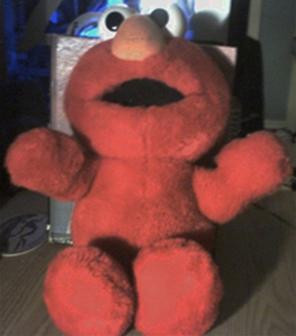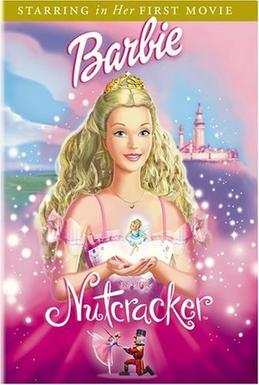Related Research Articles
AIBO is a series of robotic dogs designed and manufactured by Sony. Sony announced a prototype Aibo in mid-1998, and the first consumer model was introduced on 11 May 1999. New models were released every year until 2006. Although most models were dogs, other inspirations included lion cubs and space explorers. Only the ERS-7, ERS-110/111 and ERS-1000 versions were explicitly a "robotic dog", but the 210 can also be considered a dog due to its Jack Russell Terrier appearance and face. In 2006, AIBO was added into the Carnegie Mellon University Robot Hall of Fame.

Barbie is a fashion doll created by American businesswoman Ruth Handler, manufactured by American toy and entertainment company Mattel and introduced on March 9, 1959. The toy was based on the German Bild Lilli doll which Handler had purchased while in Europe. The figurehead of an eponymous brand that includes a range of fashion dolls and accessories, Barbie has been an important part of the toy fashion doll market for over six decades. Mattel has sold over a billion Barbie dolls, making it the company's largest and most profitable line. The brand has expanded into a multimedia franchise since 1984, including video games, animated films, television/web series, and a live-action film.

LeapFrog Enterprises, Inc. is an educational entertainment and electronics company based in Emeryville, California. LeapFrog designs, develops, and markets technology-based learning products and related content for the education of children from infancy through grade school. The company was founded by Michael Wood and Robert Lally in 1994. John Barbour is the chief executive officer of LeapFrog.

The Speak & Spell line is a series of electronic hand-held child computers by Texas Instruments that consisted of a TMC0280 linear predictive coding speech synthesizer, a keyboard, and a receptor slot to receive one of a collection of ROM game library modules. The first Speak & Spell was introduced at the summer Consumer Electronics Show in June 1978, making it one of the earliest handheld electronic devices with a visual display to use interchangeable game cartridges. The company Basic Fun brought back the classic Speak & Spell in 2019 with some minor changes.

Tickle Me Elmo is a children's plush toy from Tyco Preschool, a division of Tyco Toys, of the Muppet character Elmo from the children's television show Sesame Street. When squeezed, Elmo recites his trademark giggle. When squeezed three times, Elmo shakes and vibrates.
Chatty Cathy was a pull-string "talking" doll originally created by Ruth and Elliot Handler and manufactured by the Mattel toy company from 1959 to 1965. The doll was first released in stores and appeared in television commercials beginning in 1960, with a suggested retail price of $18.00, though usually priced under $10.00 in catalog advertisements. Chatty Cathy was on the market for six years and was the second most popular doll of the 1960s after Barbie.

Ideal Toy Company was an American toy company founded by Morris Michtom and his wife, Rose. During the post–World War II baby boom era, Ideal became the largest doll-making company in the United States. Their most popular dolls included Betsy Wetsy, Toni, Saucy Walker, Shirley Temple, Miss Revlon, Patti Playpal, Tammy, Thumbelina, Tiny Thumbelina, and Crissy. The company is also known for selling the Rubik's Cube.

Barbie as Rapunzel is a 2002 animated fairy tale film co-produced by Mainframe Entertainment and Mattel Entertainment, and distributed by Artisan Home Entertainment.

Barbie in the Nutcracker is a 2001 animated fantasy film co-produced by Mainframe Entertainment and Mattel Entertainment, and distributed by Artisan Home Entertainment.
See 'n Say is an educational toy created by Mattel in 1964 after the success of Chatty Cathy. It was the first Mattel talking toy allowing children to choose the exact phrase as heard. Although the first release focuses on farm animal sounds, it had spawned through many themes from the alphabet, counting, nursery rhymes, to licensed products.

Topper Corporation was a United States toy and board game manufacturer based in Elizabeth, New Jersey. The company, founded and run by Henry Orenstein, a holocaust survivor, produced toys under several brand names including: Johnny Lightning, Johnny Seven OMA, Dawn doll, and Suzy Homemaker.
Liddle Kiddles were dolls originally produced by toymaker Mattel Inc. in 1965. They were introduced at the New York Toy Fair in 1966 and put on the market soon after. Initially about 3 inches tall, they were small by doll standards. The sensation surrounding the dolls may have influenced other toy companies to produce their own tiny dolls.
A smart toy is an interactive toy which effectively has its own intelligence by virtue of on-board electronics. These enable it to learn, behave according to preset patterns, and alter its actions depending upon environmental stimuli and user input. Typically, it can adjust to the abilities of the player. A modern smart toy has electronics consisting of one or more microprocessors or microcontrollers, volatile and/or non-volatile memory, storage devices, and various forms of input–output devices. It may be networked together with other smart toys or a personal computer in order to enhance its play value or educational features. Generally, the smart toy may be controlled by software which is embedded in firmware or else loaded from an input device such as a USB flash drive, Memory Stick or CD-ROM. Smart toys frequently have extensive multimedia capabilities, and these can be utilized to produce a realistic, animated, simulated personality for the toy. Some commercial examples of smart toys are Amazing Amanda, Furby and iDog. The first smart-toy was the Mego Corporation's 2-XL robot (2XL), invented in the 1970s
Elliot Handler was an American inventor, business magnate, and the co-founder of Mattel. With his wife, Ruth Handler, he developed some of the biggest-selling toys in American history, including Barbie, Chatty Cathy, Creepy Crawlers, and Hot Wheels.

Tekno the Robotic Puppy is a popular electronic robotic toy which originally launched in late 2000. Tekno sold more than 7 million units in its first season and went on to sell more than 40 million units in its original 4 years of production. The worldwide popularity for Tekno led to prominent awards and widespread media coverage which included newspaper articles, television and film appearances, and a stand-alone feature on the cover of Time magazine.

Kasey the Kinderbot is an educational toy learning system designed, developed, and sold by Fisher-Price, a wholly owned division of the Mattel Corporation, nominated for the Educational Toy of the Year award in 2002. Because of its strong commercial sales, Kasey was reported as an important item in the balance sheet of Fisher-Price.

Doll Bones is a 2013 children's novel by author Holly Black with illustrations by Eliza Wheeler. Doll Bones won the Mythopoeic Fantasy Award in Children's Literature and was a Newbery Medal Honor Book in 2014.
My Friend Cayla was a line of 18-inch (46 cm) dolls which used speech recognition technology in conjunction with an Android or iOS mobile app to recognize a child's speech and perform conversations with users. The doll used the internet to search what the user said, and then responded with data that it found online. My Friend Cayla was created by Bob Delprincipe, inventor of Cindy Smart and Tekno the Robotic Puppy. The doll is banned in Germany, since the German government considers it to be a surveillance device.
References
- 1 2 3 4 5 6 Zjawinski, Sonia (August 2002). "Stepford child". Wired . Retrieved 14 October 2014.
- 1 2 3 4 Galante, Dennis (18 November 2002). "Cindy Smart doll". Time . Retrieved 14 October 2014.
- 1 2 3 Wells, Rachel (20 Aug 2003). "Move over Barbie, Cindy's way too smart". The Age . Retrieved 15 October 2014.
- 1 2 3 4 Raney, Rebecca Fairley (1 August 2002). "A chatty doll of a different kind". The New York Times . Retrieved 14 October 2014.
- 1 2 Topsfield, Jewel (23 August 2003). "New toy can read, count and tell the time". The Advertiser . p. 44.
- ↑ Bar-Cohen, Yoseph; Breazeal, Cynthia L. (2003). Biologically Inspired Intelligent Robots. SPIE Press. p. 328.
- 1 2 Fulmer, Melinda (29 March 2005). "Minimotos kick-start Toy Quest's fortunes". Los Angeles Times . Retrieved 15 October 2014.
- ↑ Chowns, Jackie (22 November 2003). "Toy story". The Sydney Morning Herald . p. C6.
- ↑ Shoebridge, Neil (29 September 2003). "Selling toys isn't child's play". The Australian Financial Review . p. 48.